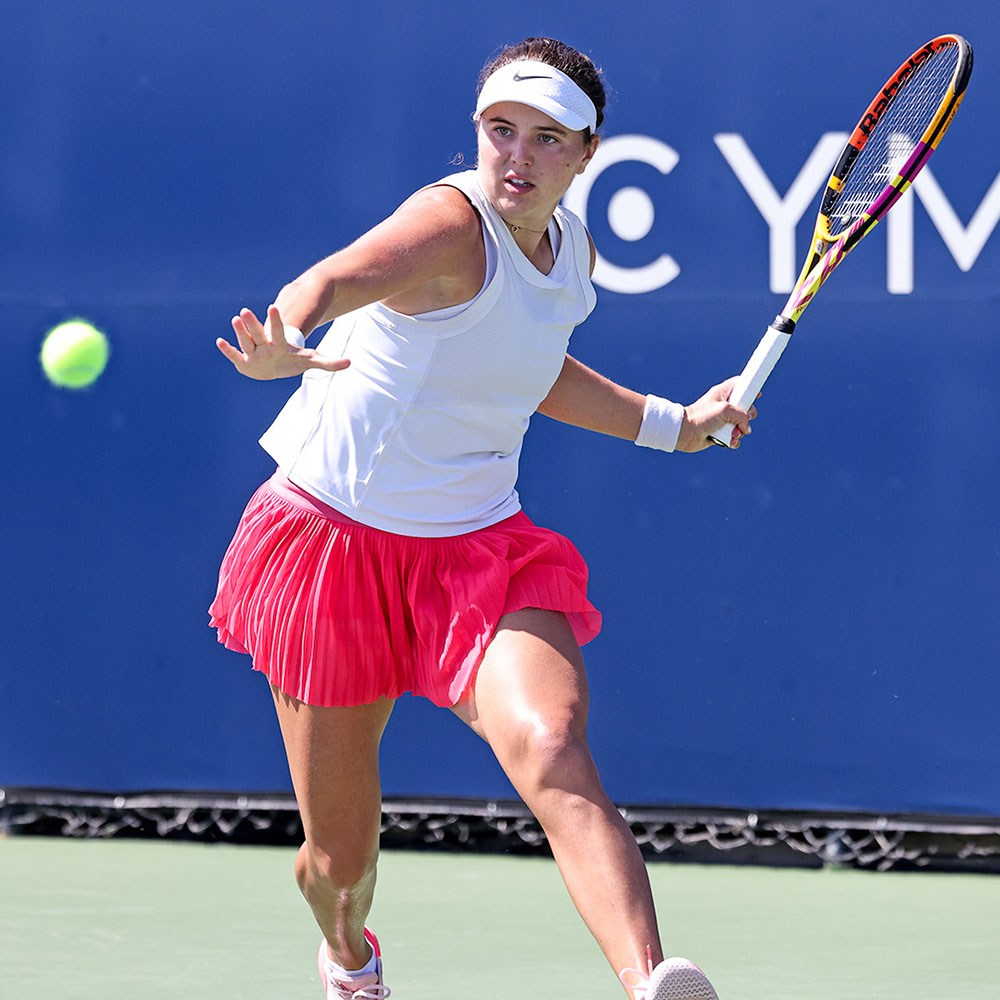YLC BLOG: WHAT PLAYERS CAN LEARN FROM WATCHING
PROFESSIONAL TENNIS
YOUTH LEADERSHIP COUNCIL | USTA SOUTHERN CALIFORNIA
PROFESSIONAL TENNIS
OCTOBER 31, 2023 | JENELLE LIU

YLC BLOG: WHAT PLAYERS CAN LEARN FROM WATCHING PROFESSIONAL TENNIS
USTA SOUTHERN CALIFORNIA
OCTOBER 31, 2023
JENELLE LIU

Santa Barbara’s Kayla Day competes in the 2023 WTA San Diego Open.
(Photo – Jon Mulvey/USTA SoCal)
SHARE THIS STORY
Share on facebook
Share on twitter
Share on linkedin
Share on reddit
Share on email
Four times a year, the largest tennis stadiums in the world are sold out. Everyone nowadays seems to watch tennis: celebrities, common folk, and perhaps most importantly, other tennis players. But players of all levels can gain a lot of insights from watching professional tennis beyond just entertainment.
For starters, watching tennis pros in person allows audiences to get an idea of their preparation for a match. At many big tournaments, a pro warming up alone can attract a large crowd. What’s the right way to warm up? How much stretching should I do? How intense do my warm ups really have to be? All these questions can be answered by watching and learning from the great players.
From both the warm ups and the match itself, keeping a careful eye on the players’ form, technique, and court positioning can be beneficial to audiences. Players will almost always know what their weakness is, yet they may not always know how to strengthen it. Picking up on how pros take their racket back on groundstrokes, how they make adjustment steps up to an approach shot, and how they pronate on their serve can help audiences see examples of what to do, but also what not to do, by seeing how effective the spin, target, and power are. Roger Federer has one of the best forehands of all time. A video of his forehand played in slow motion has racked up hundreds of thousands of views on YouTube. These types of media are available to anyone and allow players to look frame by frame at how professionals like Federer produce this weaponized stroke.
However, technique doesn’t only appear during the points. During changeovers, audiences can see in real time how players cope with being ahead or falling behind in the match. Rafael Nadal is perhaps the best known player for his strange match rituals. Every changeover, he takes sips from two different bottles and makes sure they are always perfectly aligned. When he serves, he uses the ball to tuck his hair behind his ears. However, this is not a superstition; he performs these habits whether he wins or loses. It acts as a way for him to remain focused, matching his surroundings to the order in his mind.
Emotions can build up in any sport. Oftentimes they can signify deep passion for the sport, but other times, excessive expression of emotion can be unsportsmanlike and waste one’s energy in a high-intensity environment. The big tournaments are broadcasted on international television, where millions of people can see a player lose their cool. A key takeaway for audiences is to learn how pros handle their emotions and not let it get in the way of their game. Players may not always have their best day on the court, but they can still adapt and find ways to win.
Ultimately, pulling inspiration from different players allows audiences to develop their own unique game. Especially as a young player, learning by watching is not meant to exactly replicate another player, but rather learning about yourself and your individual style.
SHARE THIS STORY
Share on facebook
Share on twitter
Share on linkedin
Share on reddit
Share on email

